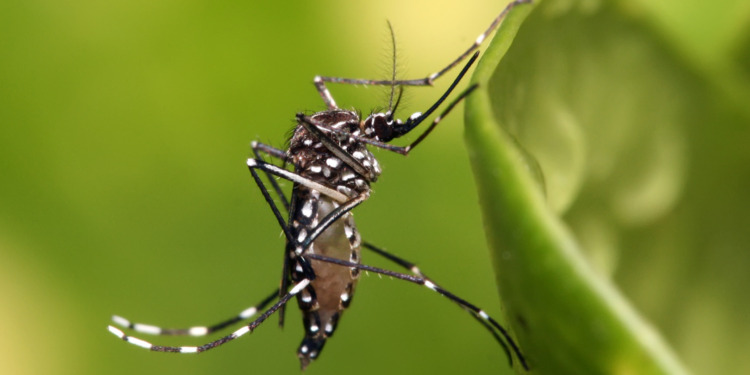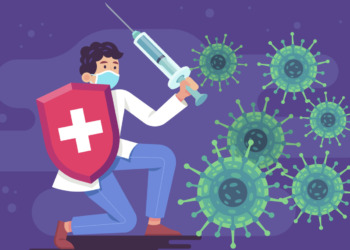For many of the last few years, our infectious disease attention has been on COVID-19 and its huge human, social, and economic costs. The response has been extraordinary, with massive investments in science and new tools and technology, which has resulted in incredible success with vaccines and early treatment. The downside has been that there is now a sort of pervasive “mission accomplished” attitude, one that spills over to the broader universe of other infectious diseases. There’s a tendency to downplay or overlook them, and Dengue fever is the latest victim of this mindset.
It is not an overstatement to suggest that much of the public and governments have moved on from any intensive focus on infectious diseases, and certainly those that are not immediately and highly visible in most news and media sources. And this would include any that might be working its way into much larger populations and regions at risk of such infections.
This myopia is a risky proposition: indeed, one such disease lurking is that of Dengue fever. It is a zoonotic disease, one that spreads from an animal to humans and is exacerbated by global warming. This happens as a result of both the disease spreading in new areas and lasting for longer periods than before. It encapsulates the One Health concept, confirming yet again the linkages between animals, humans, plants, and environmental health.
The linkage with the COVID-19 pandemic response is not theoretical in countries where there had been one because it had to be managed alongside efforts to control the spread of the coronavirus.
We need to be able to address more than one infectious disease at a time. Simply put, if we do not pay attention now to Dengue fever, we will pay for that oversight much more later.
Dengue fever outbreak: History and the situation in 2023
Dengue fever dates back to the 18th century, when it was first documented in the Philippines and Thailand. Until not long ago it was primarily a Latin American and East and South Asian problem.
Further, in the past, mortality from dengue was low to very low — now there is significant mortality. Currently, two key aspects are concerning: the disease’s epidemiology is changing worldwide, and its severity is increasing, moving it towards a deadly disease.
What this means is that half of the four billion global population is at very high risk in comparison with other infectious diseases.
As I write, dengue fever is spreading and outbreaks have been reported in various parts of the world. And it now appears that 2023 was a particularly bad year.
In countries where dengue was already endemic, the virus has spread dramatically, such as in Bangladesh where cases were reported in all 64 of the country’s districts, by mid-November 2023 infecting 291,832 people and killing 1,476.
On the other side of the world, in Peru, the health minister declared in June 2023 a state of emergency in most parts of the country to deal with a raging dengue outbreak; embattled, she recently resigned as infections and deaths continued to mount and its president, Madame Dina Boluarte, vowed to “redouble” efforts to improve public health in a post on Twitter.
Numerous other and “new” countries face dengue fever challenges, reporting substantial outbreaks, including Malaysia, Mexico, and Brazil, with a 200% increase in Dengue fever caseloads.
Generally unheard of in Europe and the U.S., by early December 2023, there had been cases, most of which were attributed to travelers, according to the European Centre for Disease Prevention and Control.
Why is Dengue fever spreading?
The infamous Aedes aegypti mosquito, which thrives in tropical and subtropical climates, is the primary vector for transmitting this and other viruses to humans. With regard to Dengue fever, over the last decades factors such as urbanization, travel, and globalization have contributed to the spread of Dengue fever, putting nearly half of the world’s population at risk.
What is relatively new is the extent to which climate change and warming temperatures have provided the host mosquito with greater range and longevity, compared to where it existed before, thus widening opportunities to spread more widely.
The medical response: Vaccines
There are both old and new developments, with the oldest vaccine, a live-attenuated tetravalent vaccine, marketed as Dengvaxia. Developed by Sanofi Pasteur, it targeted all four dengue virus serotypes. However, its rollout and use have been met with challenges and controversies, particularly regarding its safety profile in individuals not previously infected with dengue.
New vaccines include one developed by Takeda Pharmaceuticals; a live-attenuated tetravalent vaccine designed to protect against all four dengue virus serotypes. Clinical trials have demonstrated its efficacy and safety in a range of populations, including children and adults in dengue-endemic areas.
However, it is not yet available in many countries, including the U.S. or Europe, as it is undergoing regulatory review for licensing. Despite the benefits, there are still some drawbacks: Efficacy was found to vary by dengue virus serotype and the protection provided may not be complete as breakthrough cases still occurred.
Related Articles: Why One Health is Key To Address Future Pandemics | Genetic Knowledge From Past Diseases: How It Could Help Address Present Health Issues | How Climate Change Affects Health and How Countries Can Respond | Health Illiteracy – Why a Silent Epidemic Needs a “One Health” Approach | Our Emissions Are Aggravating Almost 60% of All Infectious Diseases | The Climate Is Changing: What This Means for Our Fight Against Infectious Diseases | How Do You Eliminate or Eradicate an Infectious Disease?
Another promising vaccine candidate, developed by the National Institute of Allergy and Infectious Diseases (NIAID) in collaboration with the Butantan Institute in Brazil, is a tetravalent vaccine that has undergone Phase II trials to evaluate its safety and ability to elicit an immune response in countries where dengue is prevalent, including Brazil and Thailand. As of February 2024, it is in Phase 3 clinical trials in Brazil, which means it is being tested on a large group of people but is not yet commercially available or actively used in any population.
Where are the active programs
One region that has recognized the threat from Dengue fever is South America, and as mentioned, in particular Brazil which was especially hit in 2023. Global warming and the impact of El Niño are causing one of the worst outbreaks of dengue the region has ever seen, prompting a rush to roll out vaccines.
The Pan American Health Organization (PAHO), the regional body of the World Health Organization, has also brought to bear its expertise, surveillance, and communications capabilities to actively take on this growing infectious disease.
In a new epidemiological alert, PAHO reiterated its call to countries in the Americas to intensify efforts and actions to control the Aedes aegypti mosquito, the main vector that transmits dengue fever. The call comes in response to a significant increase in the number of reported cases among several countries during the first weeks of 2024.
It is a constructive step by PAHO in alerting countries throughout its region, and it will need to maintain its follow-up with surveillance and active measures. Other regions, especially in Asia might be wise to consider doing likewise.
Editor’s Note: The opinions expressed here by the authors are their own, not those of Impakter.com — In the Featured Photo: Aedes aegypti mosquito in Dar es Salaam, Tanzania, 2009. Featured Photo Credit:Muhammad Mahdi Karim.










